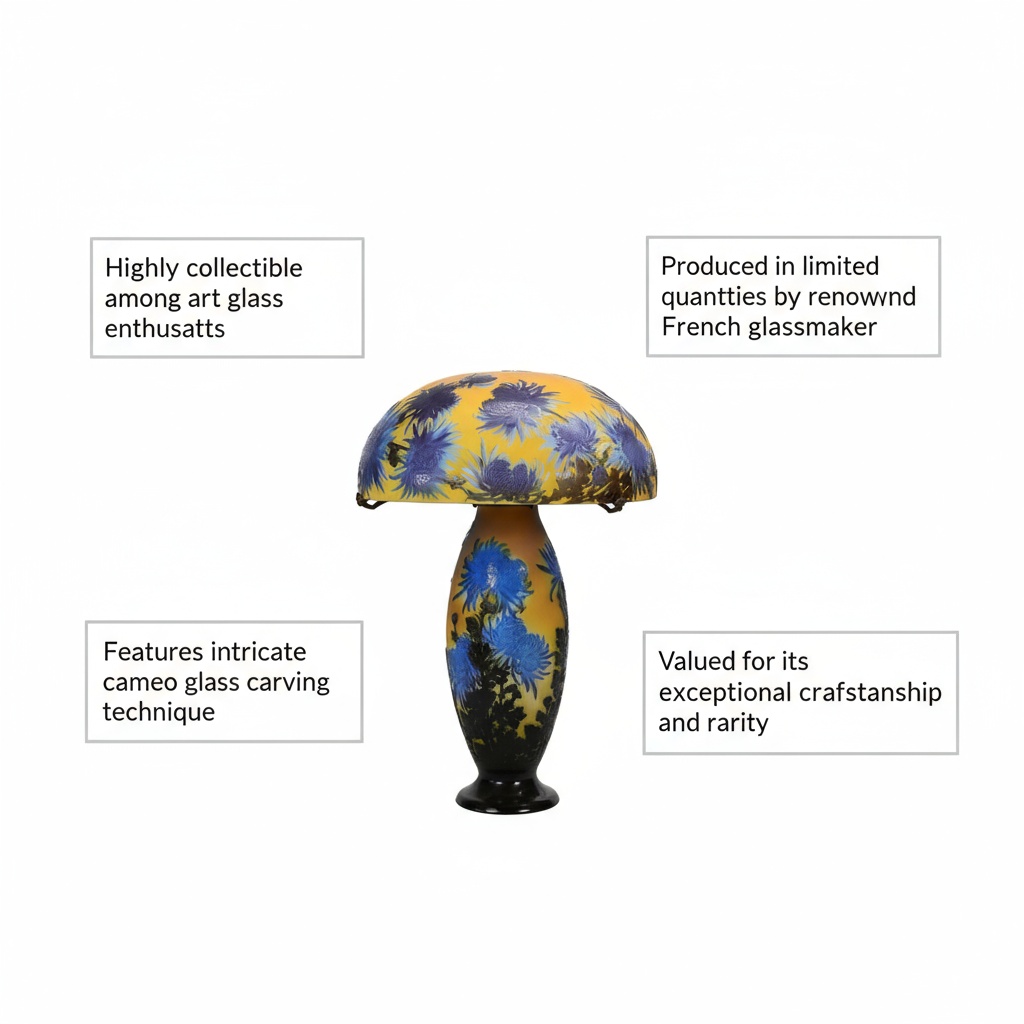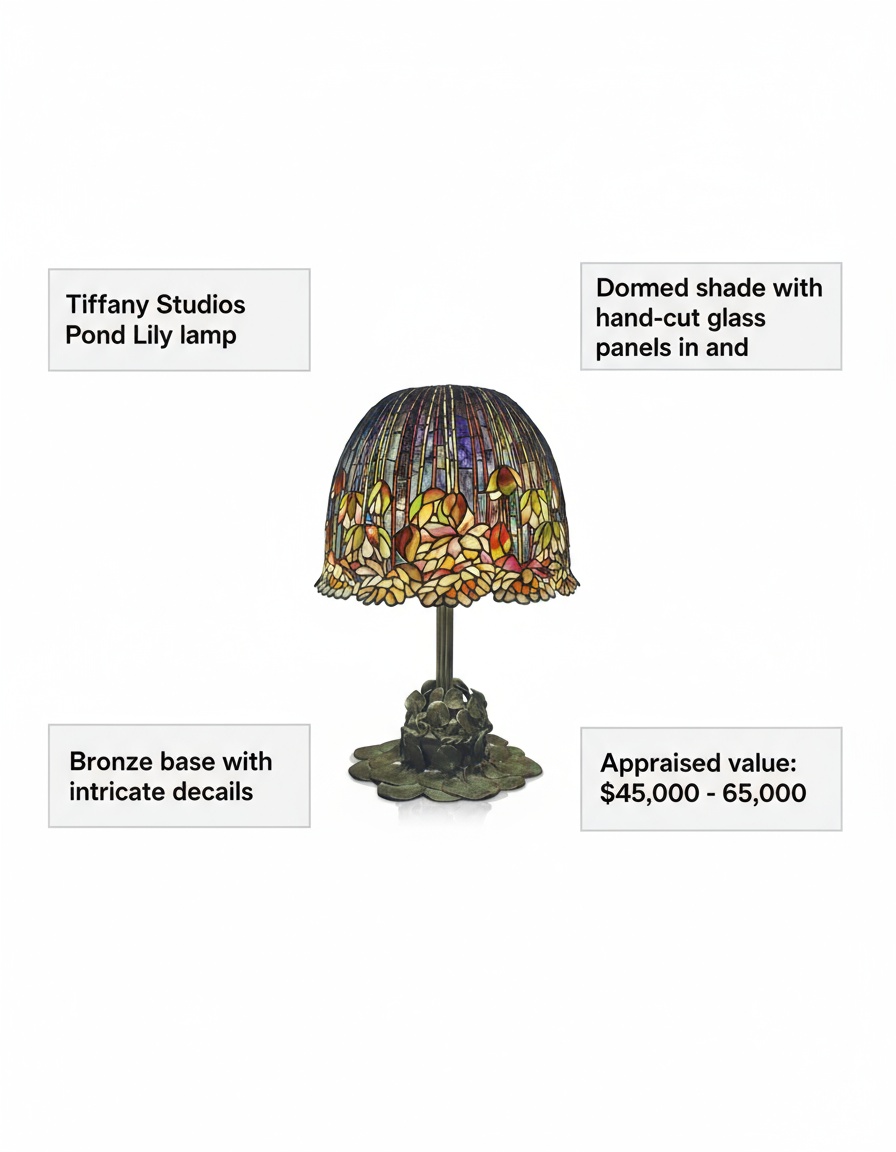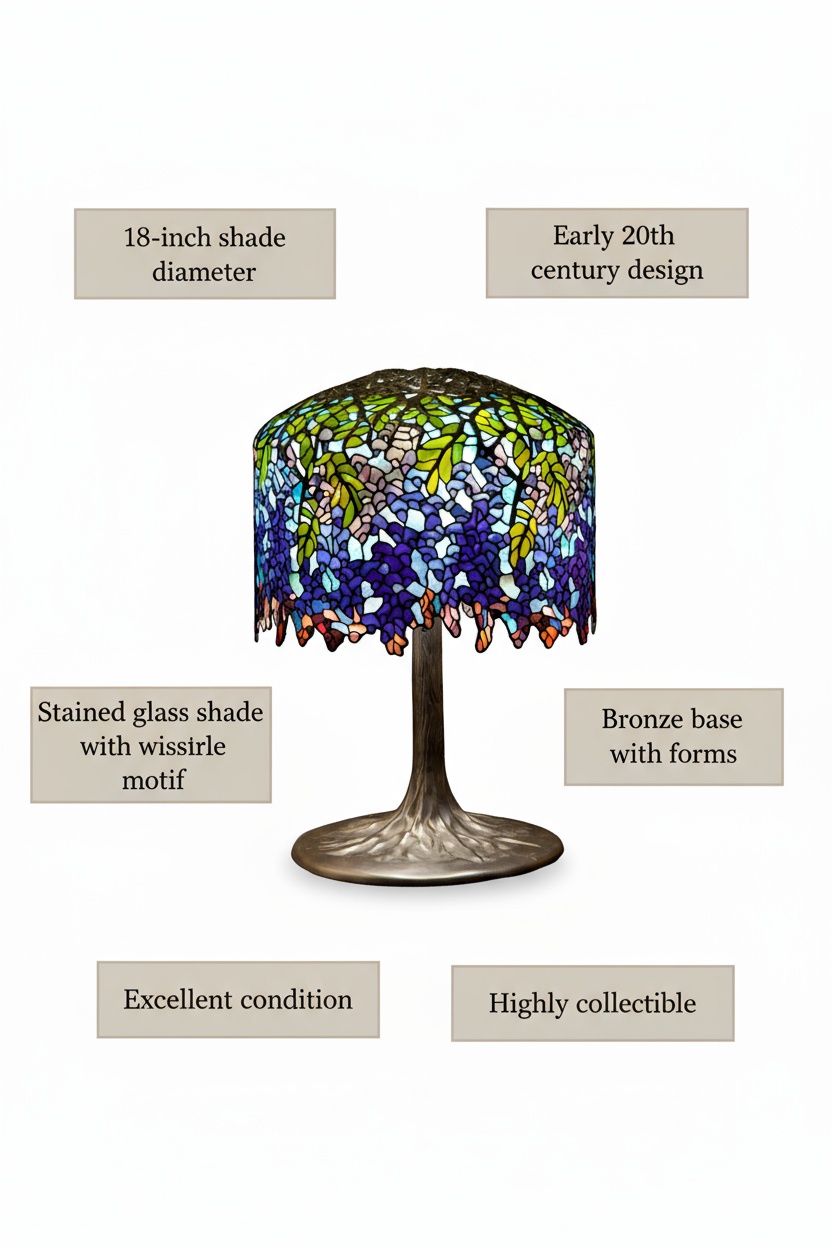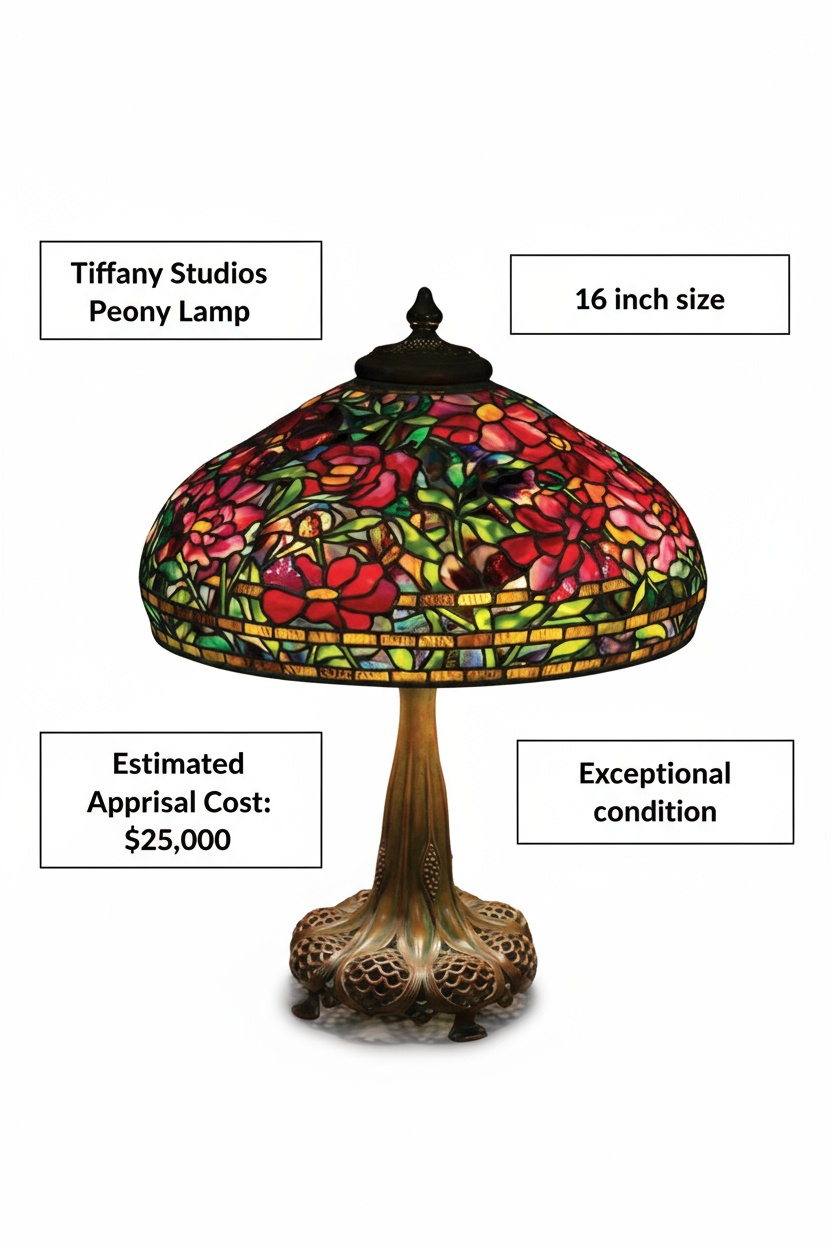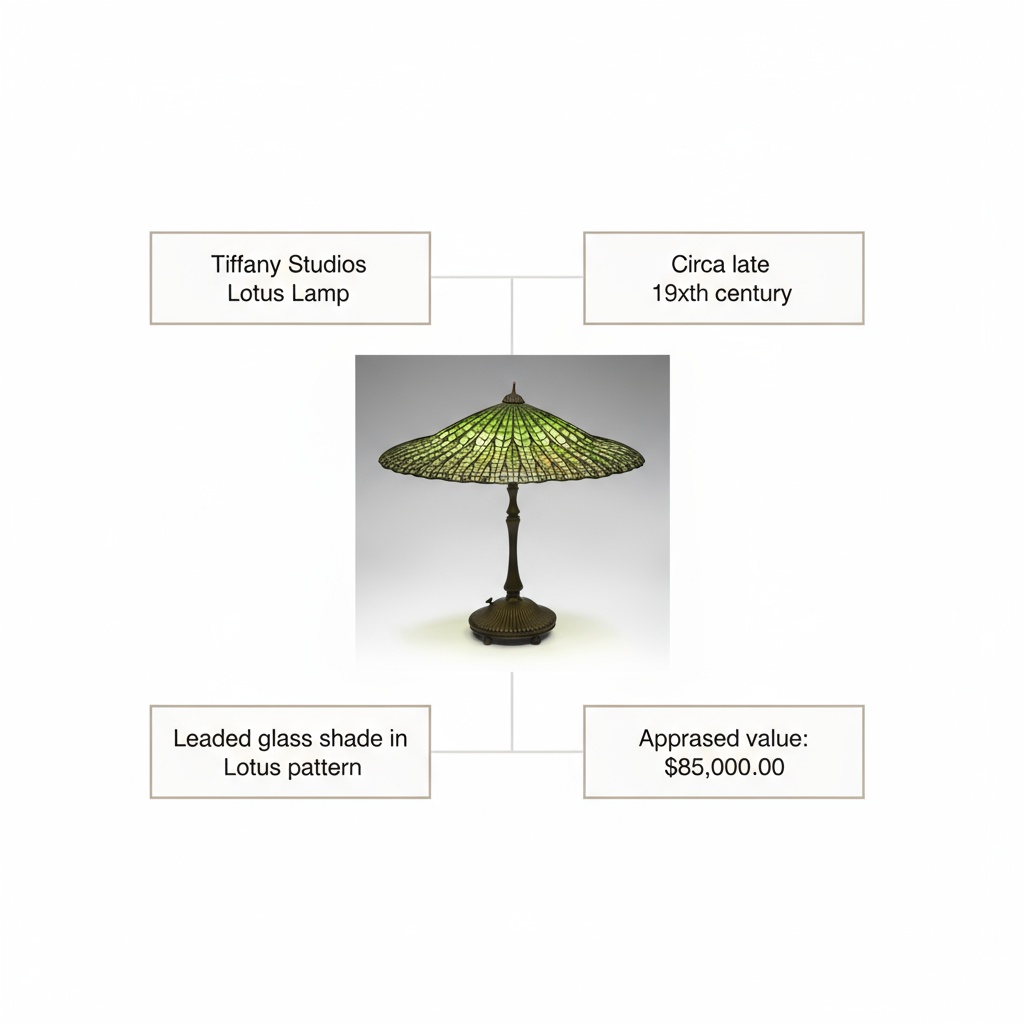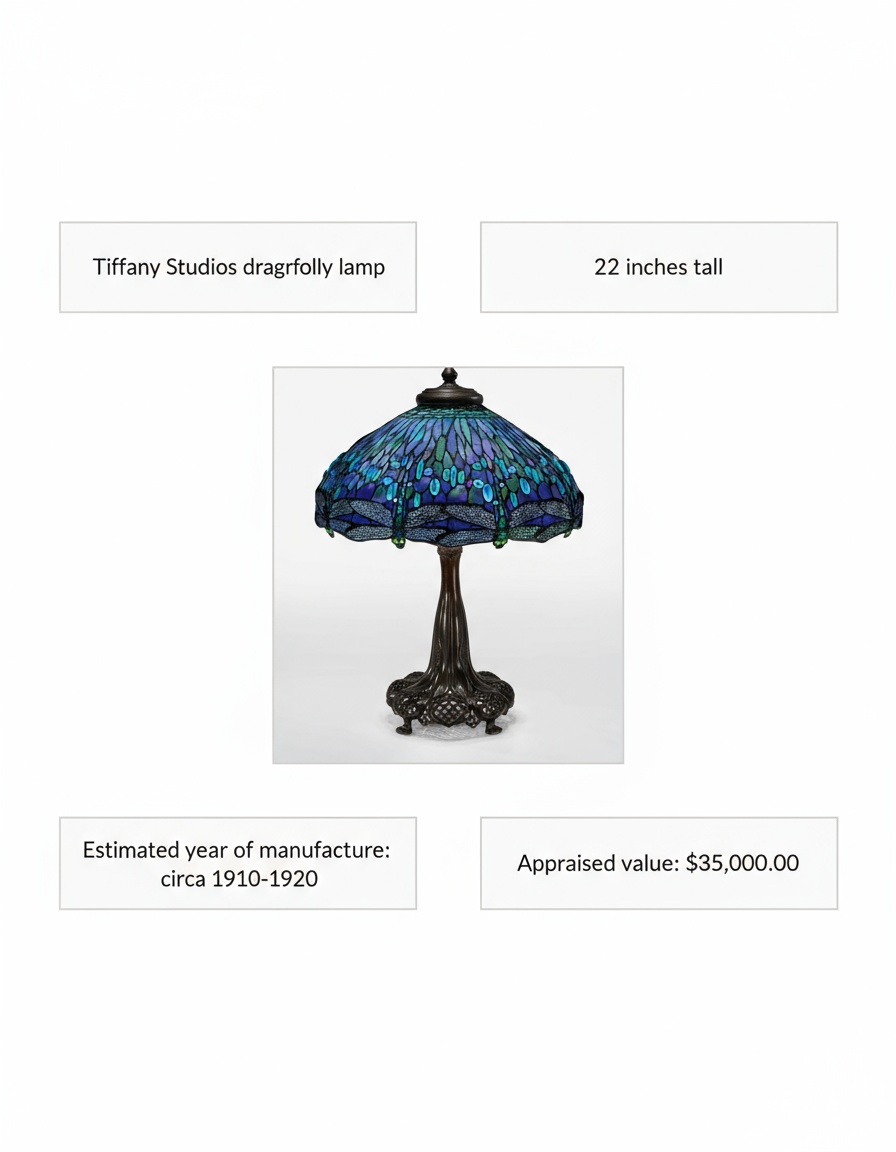<h1>Understanding Gallé Cameo Glass Table Lamp Appraisals and Value</h1>
<p>A <strong>Gallé cameo glass table lamp</strong> is more than just a lighting fixture—it's a luminous work of art from the golden age of French design. Created by the renowned glass artist Émile Gallé in the late 19th century, these lamps have become some of the most coveted pieces in the antique and decorative arts market.</p>
<p>So what exactly makes these lamps so special? The answer lies in the extraordinary craftsmanship. Each <strong>Gallé cameo glass table lamp</strong> features intricately hand-carved layers of colored glass, a technique requiring both artistic vision and technical mastery. The layered glass construction creates mesmerizing depth and texture, while delicate floral and botanical motifs seem to emerge from the translucent glass itself. When illuminated, the lamp casts a soft, ethereal glow that captures the very essence of the <strong>Art Nouveau</strong> movement.</p>
<p>If you own or are considering acquiring a <strong>Gallé cameo glass table lamp</strong>, understanding what drives its value is essential. Whether you're planning to sell, insure, or simply protect your investment, a professional appraisal can help you navigate the complex world of antique glass collectibles.</p>
<div class="callout info"><p><strong>Did You Know?</strong></p>
<p>Authentic Gallé lamps from the late 19th century represent a pivotal moment in design history—when functional objects became celebrated as artistic masterpieces.</p></div>
<h2>How to Identify an Authentic Gallé Cameo Glass Table Lamp</h2>
<p>One of the most common questions collectors ask is: <strong>How can you tell a real Gallé lamp?</strong> The answer requires examining several key characteristics.</p>
<h3>Signature and Marking Details</h3>
<p>The <strong>Gallé signature</strong> is your first line of defense against counterfeits. Authentic pieces typically bear a signature that may appear in different forms—incised, acid-etched, or impressed into the glass. You might see "Gallé," "E. Gallé," or variations with decorative flourishes. However, raised or clearly stamped marks are uncommon on original pieces and often indicate a later reproduction. Signatures should look consistent with documented period examples when you compare them to known authentic work.</p>
<h3>Glass Construction and Carving Technique</h3>
<p>Examine the layering closely. Authentic <strong>Gallé cameo glass</strong> shows:
- Multiple distinct color layers with smooth transitions between them
- Hand-carved relief decoration with depth and botanical precision
- Visible tool marks from wheel cutting or acid-etching techniques
- Varied glass thickness depending on the design's complexity</p>
<p>Reproductions, by contrast, often display uniform thickness, shallow surface decoration, and molded details rather than hand-carved artistry.</p>
<h3>Period Hardware and Fittings</h3>
<p>Original <strong>Gallé cameo glass table lamps</strong> typically use period-appropriate lamp hardware—brass fittings, silk or period fabrics for shades, and era-consistent electrical components. Modern reproductions frequently exhibit contemporary hardware, updated electrical systems, or ill-fitting components that feel anachronistic.</p>
<div class="callout warning"><p><strong>Red Flag Alert</strong></p>
<p>If the lamp has modern plastic parts, inconsistent glass coloring, or a suspiciously "perfect" signature, seek specialist authentication before making any assumptions about value.</p></div>
<h2>Why Fakes and Reproductions Are So Common</h2>
<p><strong>Are there fakes of Gallé's work, and how common are they?</strong> The short answer: yes, and quite common. The high desirability and significant market value of authentic pieces have made them prime targets for reproduction and outright forgery.</p>
<p>Many 20th-century and modern copies attempt to mimic Gallé's cameo decoration technique. Some are honest reproductions created decades ago, while others are deliberately deceptive. Common red flags include poor carving quality, inconsistent glass layers, modern lamp hardware that doesn't match the glass work period, and suspicious or poorly executed signatures.</p>
<p>This is where professional expertise becomes invaluable. A specialist in decorative arts or a credentialed appraiser can authenticate your piece and help you avoid costly mistakes—whether you're buying or selling. When in doubt, always consult a professional before investing significantly in a <strong>Gallé cameo glass table lamp</strong>.</p>
<h2>What Influences Gallé Cameo Glass Table Lamp Value?</h2>
<p>Understanding value drivers is crucial if you're selling, insuring, or simply curious about your lamp's worth. Several factors work together to determine market price:</p>
<h3>Authenticity and Provenance</h3>
<p>This is non-negotiable. An authenticated piece with documented provenance—a clear chain of ownership history—commands substantially higher prices than an unverified lamp. Provenance might include purchase receipts, exhibition catalogs, family documentation, or professional authentication records.</p>
<h3>Condition</h3>
<p>Original condition matters tremendously. Look for:
- Intact glass with no cracks, chips, or cloudiness
- Original hardware and electrical components
- Unaltered decorative elements and signatures
- No signs of amateur restoration or heavy-handed repairs</p>
<p>Even minor damage can significantly reduce value. Conversely, lamps in exceptional condition with pristine glass often command premium prices.</p>
<h3>Rarity and Design Uniqueness</h3>
<p>Not all Gallé lamps are created equal. Rare design patterns, unusual color combinations, and limited production runs drive higher valuations. A lamp featuring intricate, museum-quality artistry will outpace a simpler design, all else being equal.</p>
<h3>Size and Decorative Complexity</h3>
<p>Larger lamps with elaborate, detailed botanical carving typically fetch higher prices than smaller, simpler designs. The time and skill invested in hand-carving more elaborate patterns translate directly to perceived and actual value.</p>
<h3>Market Demand and Collecting Trends</h3>
<p>Antique and decorative arts markets fluctuate. Collector interest in specific design periods, color preferences, or artist recognition all influence current market prices. Understanding <strong>what is hot in antiques right now</strong> helps inform realistic valuations.</p>
<div class="callout tip"><p><strong>Smart Collecting Insight</strong></p>
<p>Keep detailed records of any restoration work, conservation treatments, or ownership history. This documentation becomes invaluable when appraising or selling your lamp.</p></div>
<h2>Determining Your Gallé Cameo Glass Table Lamp's Worth</h2>
<p><strong>How much is a typical Gallé cameo glass table lamp worth?</strong> Prices vary considerably based on the factors mentioned above. Here's what you can generally expect:</p>
<p><strong>Entry-Level Authentic Lamps</strong>: Smaller, simpler designs or examples with minor condition issues might range from <strong>$3,000 to $8,000</strong>.</p>
<p><strong>Mid-Range Collectible Examples</strong>: Well-crafted late 19th or early 20th-century lamps with good condition and documented provenance typically fall into the <strong>$10,000 to $25,000</strong> range.</p>
<p><strong>Premium and Museum-Quality Pieces</strong>: Rare designs, exceptional artistry, and impeccable condition can command <strong>$50,000 to $100,000 or more</strong>.</p>
<p>Occasionally, extraordinarily rare or historically significant examples exceed $100,000 at prestigious auction houses.</p>
<h3>Finding Comparable Sales</h3>
<p><strong>How do I know what my Galle cameo glass table lamp is worth?</strong> The best approach involves research and professional guidance.</p>
<ol>
<li>
<p><strong>Check auction house results</strong>: Major houses like <strong>Sotheby's</strong>, <strong>Christie's</strong>, and <strong>Bonhams</strong> maintain searchable databases of past sales. These "comps" provide real-world pricing data.</p>
</li>
<li>
<p><strong>Browse online marketplaces</strong>: Platforms like <strong>Invaluable</strong> and <strong>LiveAuctioneers</strong> catalog auction results and often include high-resolution images and final sale prices.</p>
</li>
<li>
<p><strong>Submit for specialist appraisal</strong>: For a confident estimate, connect with a credentialed appraiser specializing in decorative arts or antique glass. Services like <a href="/types/antique-artwork">AppraiseItNow</a> link you with <strong>USPAP-compliant appraisers</strong> certified by organizations such as the <strong>International Society of Appraisers (ISA)</strong> and the <strong>Appraisers Association of America (AAA)</strong>.</p>
</li>
</ol>
<p>Getting professional guidance is especially important when significant value is at stake. An appraiser can evaluate your specific lamp, compare it against authentic examples, and provide a defensible valuation suitable for insurance, estate planning, or sales purposes.</p>
<h2>Caring for Your Gallé Cameo Glass Table Lamp</h2>
<p>Once you understand your lamp's value, protecting it becomes paramount. Proper care preserves both its beauty and its investment potential.</p>
<p><strong>What is the safest way to clean a Galle cameo glass lamp?</strong> Follow these gentle guidelines:</p>
<ol>
<li>
<p><strong>Dust regularly</strong> with a soft brush or microfiber cloth to prevent grime buildup.</p>
</li>
<li>
<p><strong>For stubborn dirt</strong>, mix mild, pH-neutral soap with distilled water and gently wipe the glass with a soft cloth. Never soak the entire lamp.</p>
</li>
<li>
<p><strong>Avoid harsh chemicals</strong>—ammonia-based cleaners, abrasive pads, and strong solvents can damage the delicate surface.</p>
</li>
<li>
<p><strong>Remove the shade</strong> from the base before cleaning to prevent water damage to electrical components or period fabric.</p>
</li>
<li>
<p><strong>Consult a conservator</strong> if your lamp shows signs of old repairs, structural damage, or if you're unsure about any aspect of care.</p>
</li>
</ol>
<p>For detailed guidance on caring for delicate glassware, explore our comprehensive <a href="/blog/appraising-fine-glass-and-crystal-valuing-delicate-glassware-and-artistic-creations">guide to appraising fine glass and crystal</a>.</p>
<div class="callout note"><p><strong>Conservation Tip</strong></p>
<p>Store your lamp in a stable environment away from direct sunlight, extreme temperature fluctuations, and humid conditions that can cause glass deterioration over time.</p></div>
<h2>Dating Your Gallé Cameo Glass Table Lamp</h2>
<p><strong>How can I tell how old my Galle lamp is?</strong> Precise dating requires attention to multiple details:</p>
<p><strong>Signature Style</strong>: Earlier pieces (1880s–1900s) often feature different signature treatments than later works. Studying period examples helps establish approximate date ranges.</p>
<p><strong>Glass Color and Layering</strong>: Early Gallé lamps typically showcase more complex, naturalistic color combinations and intricate layering techniques. Later 20th-century reproductions often show less sophisticated color work.</p>
<p><strong>Decorative Motifs</strong>: The botanical subjects, naturalistic treatment, and design sophistication evolved throughout Gallé's career and the Art Nouveau period. Specialists can often date pieces within a 5–10 year window based on design characteristics.</p>
<p><strong>Lamp Fittings and Hardware</strong>: The style of brass components, socket design, and shade-mounting hardware offer chronological clues. Period documentation and comparative examples guide accurate dating.</p>
<p><strong>Provenance Research</strong>: Old photographs, purchase receipts, exhibition documentation, or family records can confirm or refine estimated dates.</p>
<p>A professional appraiser brings systematic knowledge and comparative experience to dating. If precision matters—especially for estate planning, insurance, or auction purposes—professional dating through appraisal is well worth the investment.</p>
<h2>When to Seek Professional Appraisal Services</h2>
<p>While research and online comparisons provide helpful context, there's no substitute for a credentialed specialist when significant value or decision-making is involved.</p>
<p><strong>You should get a professional appraisal if:</strong></p>
<ul>
<li>You're selling or donating your lamp and need a defensible market value estimate</li>
<li>You're insuring the lamp and require documentation for your insurance company</li>
<li>You're settling an estate or dividing assets and need objective valuation</li>
<li>You're uncertain about authenticity and need expert authentication</li>
<li>You inherited a lamp and want to understand what you have</li>
</ul>
<p><a href="/types/artwork">AppraiseItNow</a> specializes in connecting collectors, estates, and institutions with <strong>credentialed appraisers</strong> from respected organizations including the <strong>American Society of Appraisers (ASA)</strong>, <strong>Certified Appraisers Guild of America (CAGA)</strong>, and others. Our platform ensures <strong>USPAP compliance</strong>—meeting the highest professional and ethical standards.</p>
<p>The appraisal process is straightforward: submit high-quality photographs and descriptions through our secure platform, and our network matches you with a specialist in decorative arts and antique glass. You receive a detailed, professionally formatted report suitable for legal, financial, or insurance purposes.</p>
<h2>Learning More About Antique Appraisals</h2>
<p>If you're new to antique collecting or appraisal processes, several comprehensive resources can deepen your knowledge. Our guides on <a href="/blog/appraising-antiques-unveiling-the-hidden-treasures-in-your-collection">appraising antiques and unveiling hidden treasures</a> and <a href="/blog/understanding-the-value-of-your-antique-furniture-examining-quality-and-rarity">understanding the value of antique furniture</a> explore principles applicable to decorative arts across categories. For those interested in broader <a href="/types/personal-property">personal property appraisals</a>, we offer detailed guidance on condition assessment and valuation methodology.</p>
<p>Additionally, our articles on <a href="/blog/tips-for-obtaining-accurate-personal-property-appraisals">tips for obtaining accurate personal property appraisals</a> and <a href="/blog/the-interplay-between-condition-and-value-in-personal-property-appraisals">the interplay between condition and value</a> provide practical frameworks for understanding how professionals evaluate precious objects.</p>
<div class="callout note"><p><strong>Key Takeaway</strong></p>
<p>A <strong>Gallé cameo glass table lamp</strong> is an investment in both beauty and history. Whether you're buying, selling, insuring, or simply protecting what you own, professional appraisal connects you with certified experts who understand the nuances of Art Nouveau glass, market trends, and proper valuation methodology. Don't let uncertainty undervalue your treasure—get a specialist appraisal today.</p></div>
<hr />
<p><strong>Ready to discover your Gallé lamp's true value?</strong> Contact <a href="/types/household-goods">AppraiseItNow</a> today and connect with a credentialed appraiser in your area. Our secure online platform makes appraisal convenient, and our specialists ensure your valuable piece receives the professional evaluation it deserves.</p>

